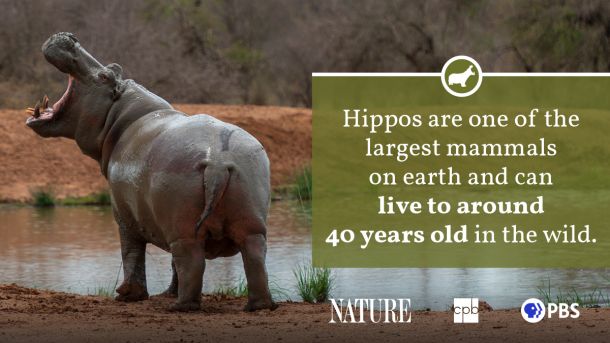Introduction:
The hippopotamus, often referred to as the river horse, is one of the most intriguing and powerful creatures in the animal kingdom. Native to sub-Saharan Africa, these massive mammals have captured the imagination of humans for centuries. In this article, we will delve into the fascinating world of hippos, exploring their biology, behavior, and the crucial role they play in maintaining the balance of their ecosystems.

Physical Characteristics:
The hippopotamus (Hippopotamus amphibius) is the third-largest land mammal, following the elephant and rhinoceros. Adult hippos can weigh anywhere from 3,000 to 9,000 pounds, with males typically being larger than females. Despite their seemingly bulky appearance, hippos are well-adapted to aquatic life. Their barrel-shaped bodies are supported by short legs and webbed toes, enabling them to move swiftly through water.
Remarkably, hippos possess unique skin adaptations that serve as a natural sunscreen. Their skin secretes a red, oily substance that not only protects them from the sun but also acts as an antimicrobial barrier, preventing infections. This phenomenon gives hippos their characteristic reddish-brown hue.
Habitat and Behavior:
Hippos are primarily aquatic animals, spending a significant portion of their lives in rivers, lakes, and swamps. They are highly territorial and can be found in groups, known as pods, ranging from a few individuals to as many as thirty. Despite their seemingly docile appearance, hippos are considered one of the most aggressive and dangerous animals in Africa.
To mark their territories and communicate with one another, hippos engage in vocalizations, including grunts, roars, and honks. Despite their massive size, hippos are surprisingly agile in water, capable of reaching impressive speeds when needed. Their formidable teeth, especially the large lower canines, serve as powerful weapons during territorial disputes.
Ecological Role:
The role of hippos in their ecosystems extends beyond their imposing presence. Often referred to as “ecosystem engineers,” these herbivores play a crucial role in shaping the landscape. By grazing on vegetation along riverbanks, they create pathways and open spaces, influencing the distribution of plant species.
Additionally, hippopotamus dung serves as a vital nutrient source for aquatic environments. Their excrement contains nutrients that promote the growth of algae and phytoplankton, benefiting the entire aquatic food web. In this way, hippos contribute to the overall health and productivity of their habitats.
Conservation Challenges:
While hippos are not currently classified as endangered, they face various conservation challenges. Habitat loss, pollution, and human-wildlife conflict are among the threats these magnificent creatures confront. Furthermore, poaching for their ivory teeth and meat remains a concern in some regions.
Conclusion:
The hippopotamus, with its powerful presence and unique ecological role, stands as a testament to the complexity and diversity of the natural world. Beyond their formidable appearance, these creatures play a vital role in maintaining the health of their habitats. As we continue to learn more about hippos, it becomes increasingly clear that these river guardians are not only fascinating but also integral to the delicate balance of African ecosystems. It is our responsibility to appreciate and conserve these magnificent animals for generations to come.


Leave a Comment